For a printable version of newsletter click here.
For a printable version of newsletter with photos click here.
For a printable version of newsletter with photos click here.
KNIGHTS ON THEIR BACKS
Lena Lentz Hardt, on her journey to the teutonic medieval, has learned of agrarian beginnings in the villages called Dörfer, she’s exposed herself to animist and pagan residue in the time of early church, she’s meddled with merchants when up rose cities. But, hey, history á la Hollywood gives us all those knights in the Middle Ages – where are the knights?, Lentz is asking.
We did mention them in the context of counts and princes whose wastrel Virtue commanded them to entertain their knights with mouth-puckering-tart wine and heaped foods. But if you want more of knights, Lentz, to take back to Lentz Spelt Farms on the Columbia Plateau, why, we’ll give you knights in all their suicidal glory. You may no longer think it justifiable that knights are the darlings of popular fiction and film, but that’s the risk you take.
Let’s start with the farmers. Decidedly, most of them weren’t exactly fond of knights.
The German word for knight is Ritter, implying that the man is a “rider.” A horse was part and parcel of a knight, and it had to be a “destrier,” a war horse big and sturdy enough for carrying its own armor, called the “barding,” plus the iron-heavy knight upon its back. On one hand the destrier had to be smart, that is, readily trainable, on the other hand the horse had to be so much of a brute that it could be told to charge into the middle of a melee.
Farmer, too, had horse or horses, but those were draft animals. History books give no indication if farmers rode or not; judging by Romanian communities that still lead medieval agrarian lives today, farmers do not ride but use their horses before plow and wagon exclusively. In any case, whenever historians describe battle between knights and farmers, the farmer is always on foot.
The main problems farmers had with knights were on account of the law that forbade fences around fields (although, the later row-crop “gardens” were fenced). The knights regarded the hunt as training for war, and insisted on being able to follow their stag into the grain stands.
So, some farmers not only had to keep the hunting hounds for their knight, but on hunting days they were required to form a phalanx of beaters. And guess where they had to drive the game, not deeper into the forest but toward the open ground by villages.
And when the knights were not hunting, wild beasts from the forest had the run of the fenceless fields. (Rooting wild boars damage farm crops to this day, in Germany.)
As for farmers hunting, again we have Middle Ages’ great variability. In some eras and areas, farmers were allowed to hunt freely – although never in the forests that were set-aside game reserves for king and Kaiser. At other times and places the farmer’s right to hunt was restricted to small game; in still other periods he was not allowed to hunt at all, not even in his own fields.
The knights seemed to take farmers and serfs for granted. Since farmers were required to serve in war time, the knights rode into villages to press the young men, and those farm boys had better not be hiding.
Of course, there must have been farmer sons who went with the knights quite willingly. You know teenagers, they’re easily drawn away from routine simply because there ought to be a wider world out there. That the whole point was to bash the heads of farmer sons from elsewhere... On the march as foot soldiers they had to work as well, which could include building battering rams and other siege machines that were monumental in size.
A few chronicles report instances of villagers supporting their lord in his feud, the men volunteering to join his knights in war.
*****
Lena Lentz Hardt, on her journey to the teutonic medieval, has learned of agrarian beginnings in the villages called Dörfer, she’s exposed herself to animist and pagan residue in the time of early church, she’s meddled with merchants when up rose cities. But, hey, history á la Hollywood gives us all those knights in the Middle Ages – where are the knights?, Lentz is asking.
We did mention them in the context of counts and princes whose wastrel Virtue commanded them to entertain their knights with mouth-puckering-tart wine and heaped foods. But if you want more of knights, Lentz, to take back to Lentz Spelt Farms on the Columbia Plateau, why, we’ll give you knights in all their suicidal glory. You may no longer think it justifiable that knights are the darlings of popular fiction and film, but that’s the risk you take.
Let’s start with the farmers. Decidedly, most of them weren’t exactly fond of knights.
The German word for knight is Ritter, implying that the man is a “rider.” A horse was part and parcel of a knight, and it had to be a “destrier,” a war horse big and sturdy enough for carrying its own armor, called the “barding,” plus the iron-heavy knight upon its back. On one hand the destrier had to be smart, that is, readily trainable, on the other hand the horse had to be so much of a brute that it could be told to charge into the middle of a melee.
Farmer, too, had horse or horses, but those were draft animals. History books give no indication if farmers rode or not; judging by Romanian communities that still lead medieval agrarian lives today, farmers do not ride but use their horses before plow and wagon exclusively. In any case, whenever historians describe battle between knights and farmers, the farmer is always on foot.
The main problems farmers had with knights were on account of the law that forbade fences around fields (although, the later row-crop “gardens” were fenced). The knights regarded the hunt as training for war, and insisted on being able to follow their stag into the grain stands.
So, some farmers not only had to keep the hunting hounds for their knight, but on hunting days they were required to form a phalanx of beaters. And guess where they had to drive the game, not deeper into the forest but toward the open ground by villages.
And when the knights were not hunting, wild beasts from the forest had the run of the fenceless fields. (Rooting wild boars damage farm crops to this day, in Germany.)
As for farmers hunting, again we have Middle Ages’ great variability. In some eras and areas, farmers were allowed to hunt freely – although never in the forests that were set-aside game reserves for king and Kaiser. At other times and places the farmer’s right to hunt was restricted to small game; in still other periods he was not allowed to hunt at all, not even in his own fields.
The knights seemed to take farmers and serfs for granted. Since farmers were required to serve in war time, the knights rode into villages to press the young men, and those farm boys had better not be hiding.
Of course, there must have been farmer sons who went with the knights quite willingly. You know teenagers, they’re easily drawn away from routine simply because there ought to be a wider world out there. That the whole point was to bash the heads of farmer sons from elsewhere... On the march as foot soldiers they had to work as well, which could include building battering rams and other siege machines that were monumental in size.
A few chronicles report instances of villagers supporting their lord in his feud, the men volunteering to join his knights in war.
*****
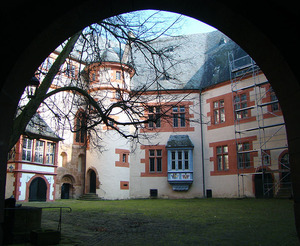
Lentz on a museum tour inside Schloss Büdingen in Hesse. The guide, Christa Hollnagel, a very German woman in a bright red flowing coat (it’s cold in the castle at begin of March), explains the back story: a small castle had stood at the location before the first of the standing castle went up; that original keep had served knights from the 9th to the 11th century. Then, in 1170, the local count was obligated to built Kaiser Barbarossa a castle at Gelnhausen, 15 kilometers away; upon finishing that project, the count built himself a very similar castle at Büdingen. “The count probably used the same workmen,” Hollnagel said. “This castle here is situated on what was swamp, so it’s considered a water fortress.”
Schloss Büdingen distinguishes itself by two particulars, she added. “It was never destroyed since 1241, when one of the last battles of the Staufer dynasty was fought here. And, because later counts didn’t have a lot of money, they didn’t remove old structures to build new ones, as was the case with most castles, instead they left the old and added on, on top, to save money. That’s why you have different architecture as you go up: Romanesque, then Gothic, then Renaissance. From about 1500 on it’s a Schloss.” (In German, the word “castle” covers two aspects, it can be translated as Burg, a buttress, a keep surrounded by defensive wall; the other translation, Schloss, is also a stronghold with wall and moat usually, but possesses spaciousness and splendor of a palace.)
At ground level we enter a dark hall. Lentz stands on the very same flagstones where once strode Barbarossa. The stone-vaulted ceiling was built in a later era, Hollnagel explains: Barbarossa looked up at wood beams supporting a flat roof blackened by the hearth’s smoky fire. Lentz senses that she’s supposed to be awed – Barbarossa! We’re shown where beneath one of the windows the stone floor deliberately sinks toward the wall that’s missing a stone at floor level: this is where the nobles defecated, their refuse slithering down into the moat outside. Without prompting from Hollnagel we picture Barbarossa squatting there to do his business... Mind that your feet don’t slip, Kaiser.
Further on the castle tour a large hall bristles with weapons, manifests armor. What a big array of 12th-century technology for wholesale murder! Brute, vicious mace, and dagger and saber and sword: “This sword was used two-handed, that sword was for thrusting, that one for slashing...”
Schloss Büdingen distinguishes itself by two particulars, she added. “It was never destroyed since 1241, when one of the last battles of the Staufer dynasty was fought here. And, because later counts didn’t have a lot of money, they didn’t remove old structures to build new ones, as was the case with most castles, instead they left the old and added on, on top, to save money. That’s why you have different architecture as you go up: Romanesque, then Gothic, then Renaissance. From about 1500 on it’s a Schloss.” (In German, the word “castle” covers two aspects, it can be translated as Burg, a buttress, a keep surrounded by defensive wall; the other translation, Schloss, is also a stronghold with wall and moat usually, but possesses spaciousness and splendor of a palace.)
At ground level we enter a dark hall. Lentz stands on the very same flagstones where once strode Barbarossa. The stone-vaulted ceiling was built in a later era, Hollnagel explains: Barbarossa looked up at wood beams supporting a flat roof blackened by the hearth’s smoky fire. Lentz senses that she’s supposed to be awed – Barbarossa! We’re shown where beneath one of the windows the stone floor deliberately sinks toward the wall that’s missing a stone at floor level: this is where the nobles defecated, their refuse slithering down into the moat outside. Without prompting from Hollnagel we picture Barbarossa squatting there to do his business... Mind that your feet don’t slip, Kaiser.
Further on the castle tour a large hall bristles with weapons, manifests armor. What a big array of 12th-century technology for wholesale murder! Brute, vicious mace, and dagger and saber and sword: “This sword was used two-handed, that sword was for thrusting, that one for slashing...”
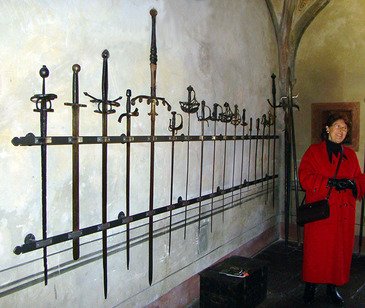
Knights did wear shining armor. We’re allowed to heft a solid breast plate and discover the considerable weight of it. We can’t try it on because it’s small, medieval men weren’t near as tall as today’s average. Nor would a knight’s helmet fit us.
By one window a short version of breast plate: “The sons of knights had to wear small-sized armor, to get used to the great weight.”
With all this weaponry and armor, and jousting tournaments that were dangerous competitions, were knights good warriors? The answer depends on the frame of reference, historians write. Knights fought according to a strict code that governed wars between nobles, as though war was but an enlargement of the tournaments. So long as the adversaries were other knights who also adhered to the knightly rules, a knight usually fought with poise. Not a small feat with all that armor on – once the full iron plate armor came into use, the knight decked himself out with iron weighing 60 pounds or more.
Knights’ battles were great thunder of horse hooves, loud clashing of weapon striking armor, the rules stipulating that knights basically fought the battle as a protracted series of duels. So long as the knight stayed on his steed, he kept fighting. Alas, unhorsed he was darn helpless because of the iron armor, not unlike a beetle that’s landed on its back, legs flailing. But thanks to the code of honor, the unhorsed knight who survived the fall was merely captured; typically he was kept as hostage until ransom moneys were paid.
The little fact that a knight was nearly helpless when thrown off his steed, would be the knights’ undoing eventually, Hollnagel concedes.
Where there are knights there will be war. Knights rode whenever their dukes wanted to “duke it out,” as the saying goes. The frequent wars among the nobility caused much suffering among farmers whose village happened to lie in the path of an army. Everywhere farmers’ sons were conscripted, often none too gently.
*****
By one window a short version of breast plate: “The sons of knights had to wear small-sized armor, to get used to the great weight.”
With all this weaponry and armor, and jousting tournaments that were dangerous competitions, were knights good warriors? The answer depends on the frame of reference, historians write. Knights fought according to a strict code that governed wars between nobles, as though war was but an enlargement of the tournaments. So long as the adversaries were other knights who also adhered to the knightly rules, a knight usually fought with poise. Not a small feat with all that armor on – once the full iron plate armor came into use, the knight decked himself out with iron weighing 60 pounds or more.
Knights’ battles were great thunder of horse hooves, loud clashing of weapon striking armor, the rules stipulating that knights basically fought the battle as a protracted series of duels. So long as the knight stayed on his steed, he kept fighting. Alas, unhorsed he was darn helpless because of the iron armor, not unlike a beetle that’s landed on its back, legs flailing. But thanks to the code of honor, the unhorsed knight who survived the fall was merely captured; typically he was kept as hostage until ransom moneys were paid.
The little fact that a knight was nearly helpless when thrown off his steed, would be the knights’ undoing eventually, Hollnagel concedes.
Where there are knights there will be war. Knights rode whenever their dukes wanted to “duke it out,” as the saying goes. The frequent wars among the nobility caused much suffering among farmers whose village happened to lie in the path of an army. Everywhere farmers’ sons were conscripted, often none too gently.
*****
The role of knights expands when the Christian God – speaking through the pope – turns extraordinarily violent: Christians are called upon to undertake armed pilgrimages to free the “holy” land from the infidels. The year is 1096. Across Europe huge crowds of mostly destitute gather to take public oath and receive remission from sins, whereupon a crux, a cross is sewn onto their clothing. Because of the crux insignia, later historians who describe the medieval Christian wars against the Moslems chose the term Crusades. As for the Moslems in the Levant, at the time of the crusades they’re called Saracen.
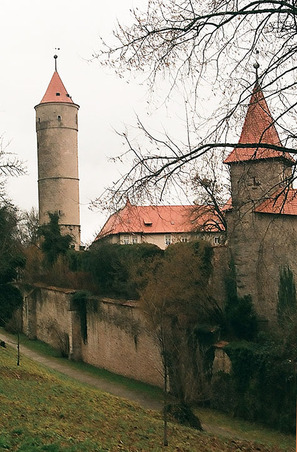
In the build-up to the crusades, the language of pope and priests had grown more and more demagogic. They demanded, and got, forced conversions of Jews to Christianity throughout much of Europe. By 1096 the mass hysteria had reached fever pitch. As the crusading hordes marched along the Rhine on their way to “take revenge for the blood of Jesus,” they remembered the infidels right in their own towns and cities – the Jews who’d avoided forced conversion. One historian makes the point that Jews were disadvantaged because many of them were literate: “... a large percentage of the common people (who could not read and write) saw in the Jews’ refusal of Christian beliefs a malicious lie, because the literate Jews should have been able to discern the (Christian) truth from the study of the bible.”
The Jews didn’t overlook the danger they were in; they appealed to Kaiser and bishops to protect them, they paid huge sums of money. Kaiser and bishops granted them protection in their cities, but that did not help the Jews in the end. As the holy-war masses reached city after city along the Rhine, the guards at the gates ignored the instructions of their lords and, being good Christians themselves, opened the gates to the Christian mob. Jews were massacred by the thousands in the cities on the Rhine.
The Jews didn’t overlook the danger they were in; they appealed to Kaiser and bishops to protect them, they paid huge sums of money. Kaiser and bishops granted them protection in their cities, but that did not help the Jews in the end. As the holy-war masses reached city after city along the Rhine, the guards at the gates ignored the instructions of their lords and, being good Christians themselves, opened the gates to the Christian mob. Jews were massacred by the thousands in the cities on the Rhine.
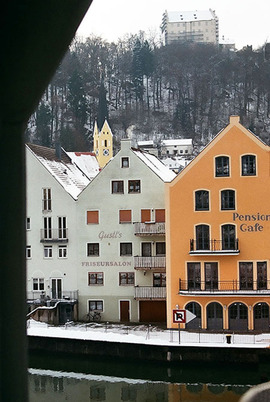
And it was still a long way to the Levant. The armed masses weren’t organized in one coherent body but moved in armed mobs of thousands, of tens of thousands, each mob with its own fire-brand prophesier and large numbers of women who went along, cheerleader-style. Villages and cities the mobs harassed, and any town on the way that didn’t give over enough food stuffs, was plundered. Reaching the Byzantine Empire, they were helped to cross over to Asia Minor – to get them out of the city that they’d begun to plunder –; however, they were also instructed to wait close by for the knights who were a few days behind, before proceeding further. About 30,000 peasant crusaders ignored that directive, and were promptly slaughtered by Turks, with very few managing to escape.
Yes, a strange era it was, the church promising that you could redeem yourself by murder, and forcing various exceptions of rule on the princes, including freedom for Leibeigene serfs for the duration of the war.
As for the knights on that crusade, without a king along to lead them, they barked at having to fight as one big unit – they were after glory for themselves individually.
Nevertheless, the First Crusade ended with the fall of Jerusalem. Once inside the city, the Christians herded all of Jerusalem’s Jews into their synagogue where they burned them alive.
Some of the later crusades were much better organized under leadership of kings, the best known Richard the Lionheart who led the Third Crusade.
*****
As for the knights on that crusade, without a king along to lead them, they barked at having to fight as one big unit – they were after glory for themselves individually.
Nevertheless, the First Crusade ended with the fall of Jerusalem. Once inside the city, the Christians herded all of Jerusalem’s Jews into their synagogue where they burned them alive.
Some of the later crusades were much better organized under leadership of kings, the best known Richard the Lionheart who led the Third Crusade.
*****
Politically, the pope had three aims in calling for crusade, he thought it would galvanize the church-going public, he wanted to stem the spread of Islam, and he hoped for some kind of unity with the orthodox church in Constantinople (the former Byzantium, today’s Istanbul). Besides, wasn’t an armed pilgrimage a way to put to good use all those poverty-riven masses...
Historians argue about the number of crusades. Most count about 10, others define several more. With certainty we know the beginning, 1096, and the end of the crusader era, 1291, that’s when the last Christian bastion in the Near East, the city of Acre, was conquered by the Saracen.
The most enigmatic crusade was the Children’s Crusade of 1212. Conflicting evidence points to actually not one but two assemblies of poor, many of them very young people, who followed two herders, one a French, one a German boy. What the two boys had in common was that they heard directly from Jesus who told them to go and convert the Saracen, not by war but by talking to them. Jesus promised the herder boys that he’d part the Mediterranean Sea so that they and their followers could walk from Rome directly to the Levant. Having crossed the Alps, the herder boys realized that Jesus had forgotten to part the sea. By some accounts the “children” were offered free passage on merchant ships, but the merchants merely took them to Africa where the youngsters were sold as slaves. Another account has the pope bid the “children” to return home. Either way, an inglorious end to religious adventure, and a lot of unnecessary dying when they crossed the Alps.
*****
The most enigmatic crusade was the Children’s Crusade of 1212. Conflicting evidence points to actually not one but two assemblies of poor, many of them very young people, who followed two herders, one a French, one a German boy. What the two boys had in common was that they heard directly from Jesus who told them to go and convert the Saracen, not by war but by talking to them. Jesus promised the herder boys that he’d part the Mediterranean Sea so that they and their followers could walk from Rome directly to the Levant. Having crossed the Alps, the herder boys realized that Jesus had forgotten to part the sea. By some accounts the “children” were offered free passage on merchant ships, but the merchants merely took them to Africa where the youngsters were sold as slaves. Another account has the pope bid the “children” to return home. Either way, an inglorious end to religious adventure, and a lot of unnecessary dying when they crossed the Alps.
*****
The crusades era actually comprised other “crusades” elsewhere, minor ones compared to the wars in the Levant. Serf and farmer generations who experienced this violently unsettling aspect of the church, must have sensed its vile mark upon Europe’s psyche: the pope had managed to establish a “moral” right to murder anyone who was not Christian.
The first to cash in on those new Christian values was a new type of knight the crusades spawned: nobles who took vows as monks-in-arms. These knights were committed to a Christian order, the main ones the Knights Templar, the Knights Hospitaller, and the Teutonic Knights (also known as the Deutsche Orden that, shockingly, is still active today in Germany). At their inception, these monk-knights’ orders were to safeguard armed pilgrimages to Jerusalem. The Knights Templar in particular became a fearsome elite force; in battle they were not allowed to turn back under any circumstance, so each knight regarded every attack as his last hurrah and fought accordingly, most fiercely.
The monk-knights’ orders soon grew into large organizations with goals far beyond a mere safeguard task. In France the Knights Templar built up a financial empire, they even invented a sort of credit card in response to noble knights’ need for resources when they were far away from their holdings in Europe. Crusading knights would turn over their wealth to the Templars for temporary safekeeping; the Templars would give the departing knight a script – sometimes written in code, other times not –, which would entitle the bearer to receive goods and money while he was in the Levant.
Through Templar documents we know that the expense of knighthood rose steeply: in 1180 a nobleman in Burgundy needed an estate of at least 3 square kilometers to support himself as a knight; by 1260 his estate had to be larger than 15 square kilometers for him to join the crusade fray.
The Teutonic Knights, meanwhile, took their killing spree to the Baltic where their order, as Prussians, ravaged and appropriated large regions.
This Teutonic “victory” over Baltic (Slavic and Suomi) heathens is despicable. A medieval Wounded Knee it was – like the soldiers from the American Civil War turned “Indian Fighters” to slaughter the indigenous, so Teutonic Order knights came from fighting well-armed Saracen enemies – against whom they didn’t do all that great –, and now turned to massacre. Along the Baltic coastline today you can visit outdoor museums with cone-like huts, hovels really, and buildings which are similar to the Native American longhouses; those primitive farmer-fishermen villages were much of the scenery of the Teutonic Order’s “victories.”
Ostsiedlung (“Settlement of the East”) was the hue and cry for the Teutonic knights: political and agricultural expansion to the East. Germans have always been up for euphemisms – Ostsiedlung sounds as though empty lands were being settled. But these lands were by no means open ground but belonged to Slavic and Baltic peoples: even before the Teutonic Order got involved, Ostsiedlung had enveloped Polish regions. Including what’s Berlin today. The Teutonic Order, on their Christian mission to kill heathens, greatly hastened, intensified, and expanded Ostsiedlung development.
For Germanic farmers the Ostsiedlung was a windfall: by the thousands did second and third farmer sons emigrate eastward, stabilizing the political scape in favor of German nobility; they did so by settling down to farming what for them was new land.
We must ask, did those farmer settlers know that crass violence had opened up lands for the Ostsiedlung? Or did so much time pass between military takeover and farmers relocating in the East, that the peasants were oblivious to the causation of Ostsiedlung? We’ll never know for sure.
*****
The crusades were the begin of the end for the knights. The Saracen, attacked in their homelands, had no inclination whatsoever to fight by European knighthood rules. When a knight fell off his horse they killed the man. And they got very good at unhorsing the knights. The Saracen horses, Arabians much fleeter on hoof and more nimble than the heavy European war horse, literally ran circles around the knights. And, the Saracen were wily in war, more cunning than the knights who due to knightly combat rules had had less occasion to resort to guile. At various encounters later, in Europe, knights’ armies would face enemies who’d copy the methods by which the Saracen had won their battles.
Farmers, too, defeated knights’ armies, in several of the farmer revolts that had started to rock the boat of nobility and church.
Swiss burgher-and-farmer armies trounced knights in 1315, and again in 1476. These farmers carried halberts, long shafts with a spike and an ax blade at the top. They used these halberts in a line, back end on the ground, pointing upward at the charging knights’ horses: with devastating effect. The farmers/burghers also couldn’t care less about knights’ battle rules, when a knight was unhorsed he was “killed like a dog” with the vicious ax-end of the halbert.
The first to cash in on those new Christian values was a new type of knight the crusades spawned: nobles who took vows as monks-in-arms. These knights were committed to a Christian order, the main ones the Knights Templar, the Knights Hospitaller, and the Teutonic Knights (also known as the Deutsche Orden that, shockingly, is still active today in Germany). At their inception, these monk-knights’ orders were to safeguard armed pilgrimages to Jerusalem. The Knights Templar in particular became a fearsome elite force; in battle they were not allowed to turn back under any circumstance, so each knight regarded every attack as his last hurrah and fought accordingly, most fiercely.
The monk-knights’ orders soon grew into large organizations with goals far beyond a mere safeguard task. In France the Knights Templar built up a financial empire, they even invented a sort of credit card in response to noble knights’ need for resources when they were far away from their holdings in Europe. Crusading knights would turn over their wealth to the Templars for temporary safekeeping; the Templars would give the departing knight a script – sometimes written in code, other times not –, which would entitle the bearer to receive goods and money while he was in the Levant.
Through Templar documents we know that the expense of knighthood rose steeply: in 1180 a nobleman in Burgundy needed an estate of at least 3 square kilometers to support himself as a knight; by 1260 his estate had to be larger than 15 square kilometers for him to join the crusade fray.
The Teutonic Knights, meanwhile, took their killing spree to the Baltic where their order, as Prussians, ravaged and appropriated large regions.
This Teutonic “victory” over Baltic (Slavic and Suomi) heathens is despicable. A medieval Wounded Knee it was – like the soldiers from the American Civil War turned “Indian Fighters” to slaughter the indigenous, so Teutonic Order knights came from fighting well-armed Saracen enemies – against whom they didn’t do all that great –, and now turned to massacre. Along the Baltic coastline today you can visit outdoor museums with cone-like huts, hovels really, and buildings which are similar to the Native American longhouses; those primitive farmer-fishermen villages were much of the scenery of the Teutonic Order’s “victories.”
Ostsiedlung (“Settlement of the East”) was the hue and cry for the Teutonic knights: political and agricultural expansion to the East. Germans have always been up for euphemisms – Ostsiedlung sounds as though empty lands were being settled. But these lands were by no means open ground but belonged to Slavic and Baltic peoples: even before the Teutonic Order got involved, Ostsiedlung had enveloped Polish regions. Including what’s Berlin today. The Teutonic Order, on their Christian mission to kill heathens, greatly hastened, intensified, and expanded Ostsiedlung development.
For Germanic farmers the Ostsiedlung was a windfall: by the thousands did second and third farmer sons emigrate eastward, stabilizing the political scape in favor of German nobility; they did so by settling down to farming what for them was new land.
We must ask, did those farmer settlers know that crass violence had opened up lands for the Ostsiedlung? Or did so much time pass between military takeover and farmers relocating in the East, that the peasants were oblivious to the causation of Ostsiedlung? We’ll never know for sure.
*****
The crusades were the begin of the end for the knights. The Saracen, attacked in their homelands, had no inclination whatsoever to fight by European knighthood rules. When a knight fell off his horse they killed the man. And they got very good at unhorsing the knights. The Saracen horses, Arabians much fleeter on hoof and more nimble than the heavy European war horse, literally ran circles around the knights. And, the Saracen were wily in war, more cunning than the knights who due to knightly combat rules had had less occasion to resort to guile. At various encounters later, in Europe, knights’ armies would face enemies who’d copy the methods by which the Saracen had won their battles.
Farmers, too, defeated knights’ armies, in several of the farmer revolts that had started to rock the boat of nobility and church.
Swiss burgher-and-farmer armies trounced knights in 1315, and again in 1476. These farmers carried halberts, long shafts with a spike and an ax blade at the top. They used these halberts in a line, back end on the ground, pointing upward at the charging knights’ horses: with devastating effect. The farmers/burghers also couldn’t care less about knights’ battle rules, when a knight was unhorsed he was “killed like a dog” with the vicious ax-end of the halbert.
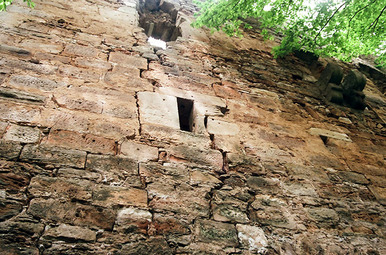
In a confrontation between Dithmarsh farmers and a Danish army of knights, the farmers carried long spears which they used to vault across the drainage ditches in the marsh. They lured the knights onto a tongue of solid ground so small in size that the knights couldn’t turn their horses well; the farmers then pushed the knights off their mounts with their home-made spears and watched them drown in the ditches.
Before long there were additional reasons why knights lost battles with dissimilarly armed combatants, due to technical advances of archery. For all the iron strength of knights’ armor plates that easily repelled arrows from regular bows, the plates could not withstand arrows shot from the English longbows, and crossbow-fired bolts also pierced the plate armor. In the Hundred Years War (1337 to 1453), at the battle at Crecy in 1346, French and German knights outnumbered the English forces five to one, and they were sure of their victory since they were facing large numbers of archers whom they despised as lowly; but the longbow-men dealt the arrogant knights a terrible defeat despite their underdog status.
Toward the end of the knights’ era, the casualties sustained were horrendous, the knights experiencing losses of close to 90 percent, 50 of 60 knights falling per battle. “Suicidal in their antiquated manners,” one German historian describes the drawn-out end of knights-in-shining-armor: a momentous naiveté their parting shot.
The knights’ exit led to armies changing to large forces of mercenaries on foot, the Söldner. By then cannons came onto the battlefield more frequently, and before long the Söldner marched with muskets.
At their crumbling stage, noble fighting knights maintained their low-nobility social status while they slowly slunk from world view, except some who became highway robbers for something better to do; for a short period they were to be reckoned with on roads through the woods. The very last endearing knight, that would be chivalrous but doddering Don Quichote de la Mancha, published in 1605.
As strictly honorary title, Knighthood is awarded in several European countries to this day.
*****
From a window in the castle tower Lentz looks out over the surrounding little city of Büdingen, and sees a few huddling Dörfer beyond, the villages that supplied the count and his knights. She thinks of all the extra food stuffs the farmers had to deliver when a Kaiser like Barbarossa visited with his big entourage.
Before long there were additional reasons why knights lost battles with dissimilarly armed combatants, due to technical advances of archery. For all the iron strength of knights’ armor plates that easily repelled arrows from regular bows, the plates could not withstand arrows shot from the English longbows, and crossbow-fired bolts also pierced the plate armor. In the Hundred Years War (1337 to 1453), at the battle at Crecy in 1346, French and German knights outnumbered the English forces five to one, and they were sure of their victory since they were facing large numbers of archers whom they despised as lowly; but the longbow-men dealt the arrogant knights a terrible defeat despite their underdog status.
Toward the end of the knights’ era, the casualties sustained were horrendous, the knights experiencing losses of close to 90 percent, 50 of 60 knights falling per battle. “Suicidal in their antiquated manners,” one German historian describes the drawn-out end of knights-in-shining-armor: a momentous naiveté their parting shot.
The knights’ exit led to armies changing to large forces of mercenaries on foot, the Söldner. By then cannons came onto the battlefield more frequently, and before long the Söldner marched with muskets.
At their crumbling stage, noble fighting knights maintained their low-nobility social status while they slowly slunk from world view, except some who became highway robbers for something better to do; for a short period they were to be reckoned with on roads through the woods. The very last endearing knight, that would be chivalrous but doddering Don Quichote de la Mancha, published in 1605.
As strictly honorary title, Knighthood is awarded in several European countries to this day.
*****
From a window in the castle tower Lentz looks out over the surrounding little city of Büdingen, and sees a few huddling Dörfer beyond, the villages that supplied the count and his knights. She thinks of all the extra food stuffs the farmers had to deliver when a Kaiser like Barbarossa visited with his big entourage.
It wasn’t just the heavy tax and tithe the law demanded of farmers to pay church and nobility. Additionally, it somehow had become “custom” – enforced custom in many cases – to “give” to the upper class livestock and products at certain church holidays. Geese had to be given on Martin’s Day, a side of pork on another holy day, eggs on Easter, chickens later in the year, and so on.
Again, it’s not a clear, consistent picture of the Middle Ages in front of us.
What to eat after visiting a castle? Lentz thinks of the knights’ forest hunts and orders Hirsch Gulasch (“elk goulash”) with Klösse (“dumplings”) and a side of red cabbage cooked. A glass of locally brewed Pilsner to wash it down.
Enjoy the meal, Lentz. What’s next in European history doesn’t make for a good appetite.
© 2014 Lentz Spelt Farms
Again, it’s not a clear, consistent picture of the Middle Ages in front of us.
What to eat after visiting a castle? Lentz thinks of the knights’ forest hunts and orders Hirsch Gulasch (“elk goulash”) with Klösse (“dumplings”) and a side of red cabbage cooked. A glass of locally brewed Pilsner to wash it down.
Enjoy the meal, Lentz. What’s next in European history doesn’t make for a good appetite.
© 2014 Lentz Spelt Farms
- Sources: Die selbstmörderische Antiquiertheit des Ritters by Horst Fuhrmann / Das Martyrium der rheinländischen Juden by Haim Hillel Ben-Sasson / Von den Archaischen Grundlagen bis zur Schwelle der Moderne, Stuart Jenks / Das Mittelalter, Paul Frischauer •

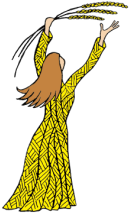
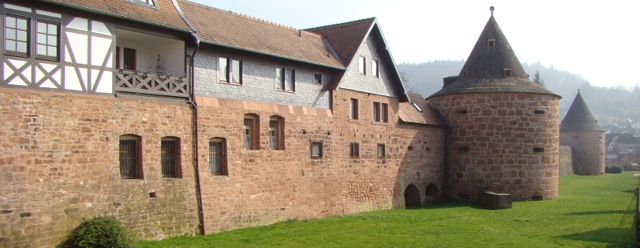
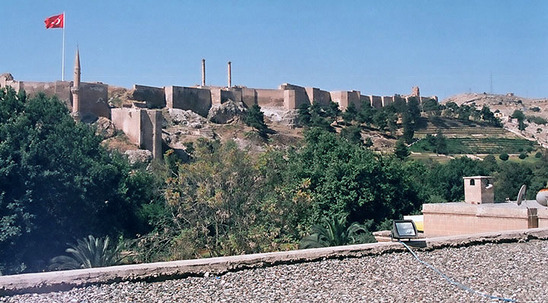
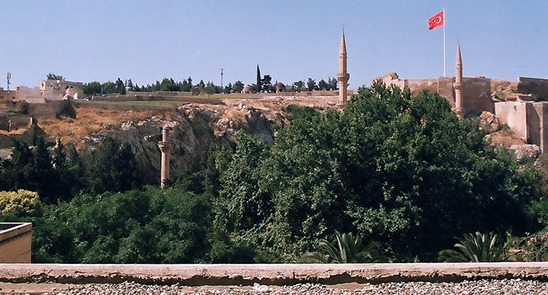

 RSS Feed
RSS Feed